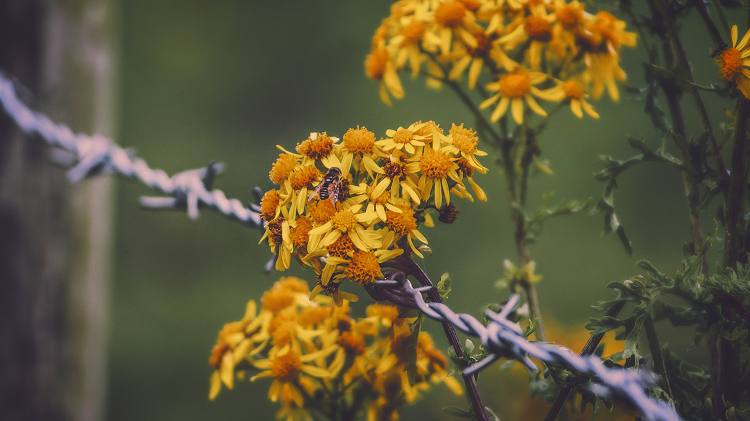Ragwort – May 2020
25 May 2020Ragwort is a biennial and a fresh batch of rosettes germinate each spring, particularly if there are gaps in the sward, and plants have been allowed to seed in previous years.
Preventing seeding, and maintaining a good thick sward helps prevent germination of new rosettes. Ragwort is a particular problem in horse paddocks because horses’ hooves break up the sward creating gaps ideal for ragwort germination. Preventing ragwort from seeding is a good long-term strategy in order to reduce the seed bank in the soil, although as ragwort seeds are wind-borne, seeds can be blown in from neighbouring areas. Seeding can be prevented by pulling up plants before they flower, by topping or by chemical control at the vegetative stage. Wear gloves when handling ragwort.
If the field was treated last autumn, then that should have controlled last year’s rosettes which were due to flower this summer. However, follow-up treatment will be required to control those rosettes germinating this spring. In some cases, a late spring herbicide spray can control last year’s rosettes before they flower, and also those germinating this spring. It can be difficult to get the timing right – before flowering shoots start to grow, and after germination of new rosettes. Also, grazing is lost because livestock must be excluded following treatment.
The phenoxy herbicides 2,4-D and MCPA at high dose rate give good cost-effective control of ragwort, so long as the treatment is well-timed. At this dose clover is severely checked.
Note: ragwort is very dangerous to stock if grazed and becomes very attractive to stock as it senesces following treatment or cutting. It remains poisonous in silage and hay so it should not be ensiled or incorporated into hay during dieback following herbicide application.
For small populations of ragwort, an alternative to the phenoxy herbicides is to spot treat using citronella oil (Barrier H). Citronella oil is a non-toxic natural oil and is best applied at the rosette stage, although can be used up to flowering. It is faster acting than phenoxy herbicides – ragwort foliage is totally killed after application. Barrier H has to be applied as a spot treatment because the grass is also damaged.
Another option for small populations is to dig out individual plants. They should be cut below the growing crown of the plant then pulled out. Devices such as the ‘Rag-fork’ can be used to uproot the plants, or for larger areas the tractor-mounted Alvan Blanch ragwort puller (the Eco-Puller) can be used. Cutting or pulling is most effective in moist soil – the ragwort is easier to uproot in moist soil. Plants should be removed from the field otherwise the wilting plants may be eaten by stock. Gloves should be worn when handling ragwort.
In all cases, if ragwort is present these treatments will increase the palatability and attractiveness of this weed to stock. Take great care to remove stock until ragwort has died away or fully recovered so that it is no longer attractive. Do not ensile or make hay with fields that have ragwort.
Sign up to the FAS newsletter
Receive updates on news, events and publications from Scotland’s Farm Advisory Service

